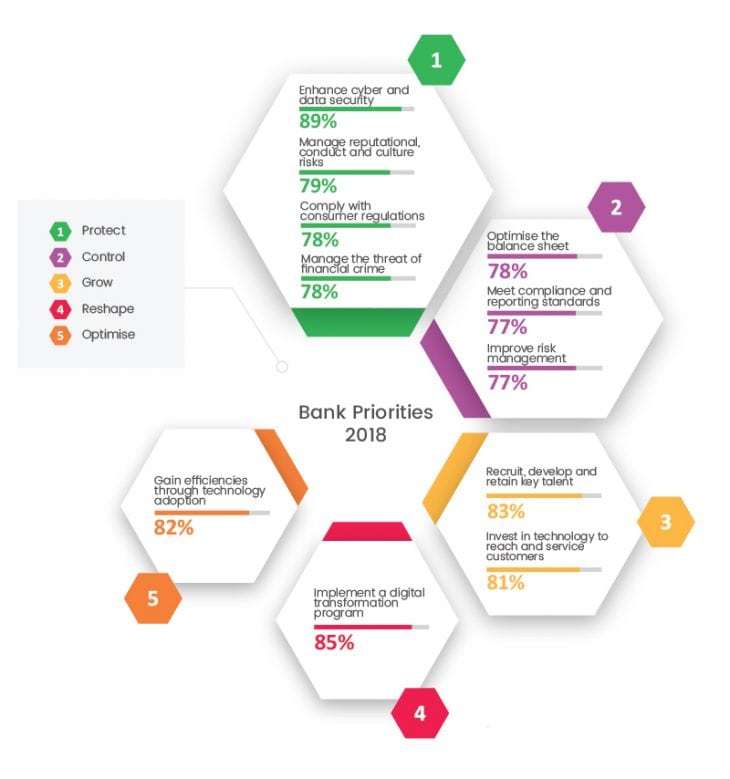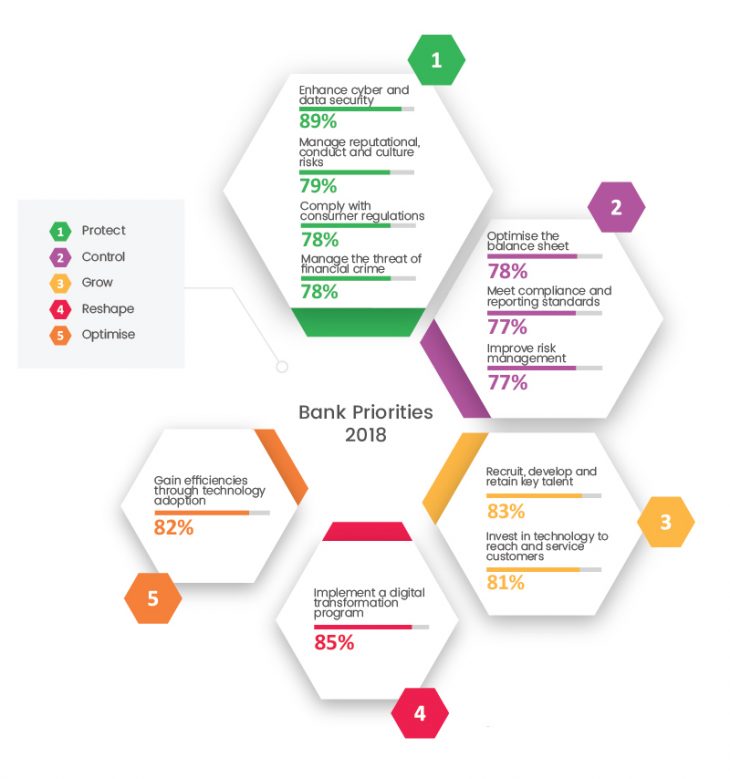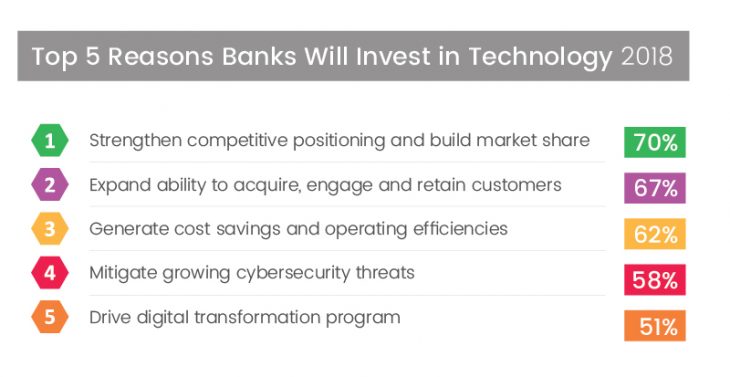Global Bank Priorities 2018

Turnerlittle.com explains what our banks are doing to restore customer faith and assesses which technologies companies will pursue to make positive changes.
In Starling Bank’s report Revolution or Evolution, it was found consumers are frustrated with the current banking system. Some of the top concerns include: ‘unclear and complicated language and charges’, ‘complicated products that don’t fit with lifestyle’ and ‘processes and technology that takes too long’.
Having built Turnerlittle.com, UK and offshore company formation agents, it was clear that analyzing the business priorities of global banks in 2018, to better understand what our banks are doing to restore customer faith around the world was a major topic of interest. To clarify findings, the report Global Banking Outlook released by EY in 2018 was used for supplementary research.
Comprising a survey of 221 financial institutions, across 29 markets, the report reveals bankers are positive about their ability to improve their financial performance in 2018.
It was observed that the priorities for global banks in 2018 were broken down into five main categories: protect, control, grow, reshape and optimize. To ‘protect’ comes out the top.
In fact, the highest priority in every category is to ‘enhance cyber and data security’ – at 89%, plainly indicating this is an urgent focus.

Other high priorities include to ‘implement a digital transformation program’ (85%), to ‘recruit, develop and retain key talent’ (83%) and to ‘gain efficiencies through technology adoption’ – at 82%.
Lower priorities include, to ‘optimise the balance sheet’ (78%), to ‘meet compliance and reporting standards’ (77%) and to ‘improve risk management’ – at 77%.
As managing director of banking services, just one aspect of our business, I can see that traditional banks need to embrace digital advances, such as those under the FinTech umbrella, to drive opportunity. Not only will this improve efficiency and help to manage risk; it’s critical to sustainable success.
In fact, it is understood embracing digital innovation will provide banks with the key to reach their goals in 2018 and to appease fed up consumers. It’s time to move with new advances, rather than wasting energy, money, and custom fighting the tide.
Upon further research, I found that within the next three years, 40-60% of companies will choose to purchase digital advances such as artificial intelligence, augmented and virtual reality and cloud technology. But I ask myself and other business professionals around me ‘what about forging a partnership with FinTech?’.
In the banking sector, the role of FinTech is widely debated. The most common thought is that the constant progress of FinTech will one day spell the end of the traditional banking system as we know it. However, should we be so quick to negate its potential?
Advances in FinTech technology include mobile functionality, simplicity, big data, accessibility, cloud computing, contextuality, personalization, and convenience. Traditional banks have few of these qualities and therefore rely on trust, security, significant capitalization and customer indifference. But if traditional banking consumers are losing faith – can the banking sector succeed without digital reform?
It’s unlikely. Especially when one takes time to consider the business benefits of a partnership between traditional banking and evolving FinTech start-ups, including (but not limited to) per ACI’s FinTech Disruptors report, the ability to generate new revenue streams (64%), the ability to enhance customer experience (59%) and the ability to offer new applications – at 56%.
In 2018, banks’ new approach to FinTech is more about seizing the opportunity and changing customer needs than defensive strategies to mitigate risk. In fact, 80% of banks agree with their FinTech peers that their innovative industry is a viable, even essential path to the future. When understanding the nature of FinTech more clearly, I also came across statistics from the same ACI report, to outline the exact areas where banks want to partner with FinTech:
- Payments – 68%
- Banking infrastructure – 43%
- E-Commerce – 40%
- Remittances – 37%
- Security and fraud management – 32%
- Consumer banking – 29%
Further to this, there are a greater number of reasons banks will invest in technology in 2018, including:
To ‘strengthen competitive positioning and build market share’ is the number one reason banks will look to invest in technology – at 70%. Followed by ‘expandability to acquire, engage and retain customers’ (67%) and to ‘generate cost savings and operating efficiencies’ (62%.)
Closely followed, was to ‘mitigate growing cybersecurity threats’ (58%) and to ‘drive digital transformation program’ – at 51%.
Indeed, by embracing themes like openness, collaboration, and investment, banks can afford to disrupt their own business model rather than waiting for challenger models to do so.

The post Global Bank Priorities 2018 appeared first on PaymentsJournal.
Bank Customer Interactions E-Commerce Fraud Risk and Analytics Industry Insights Payments
